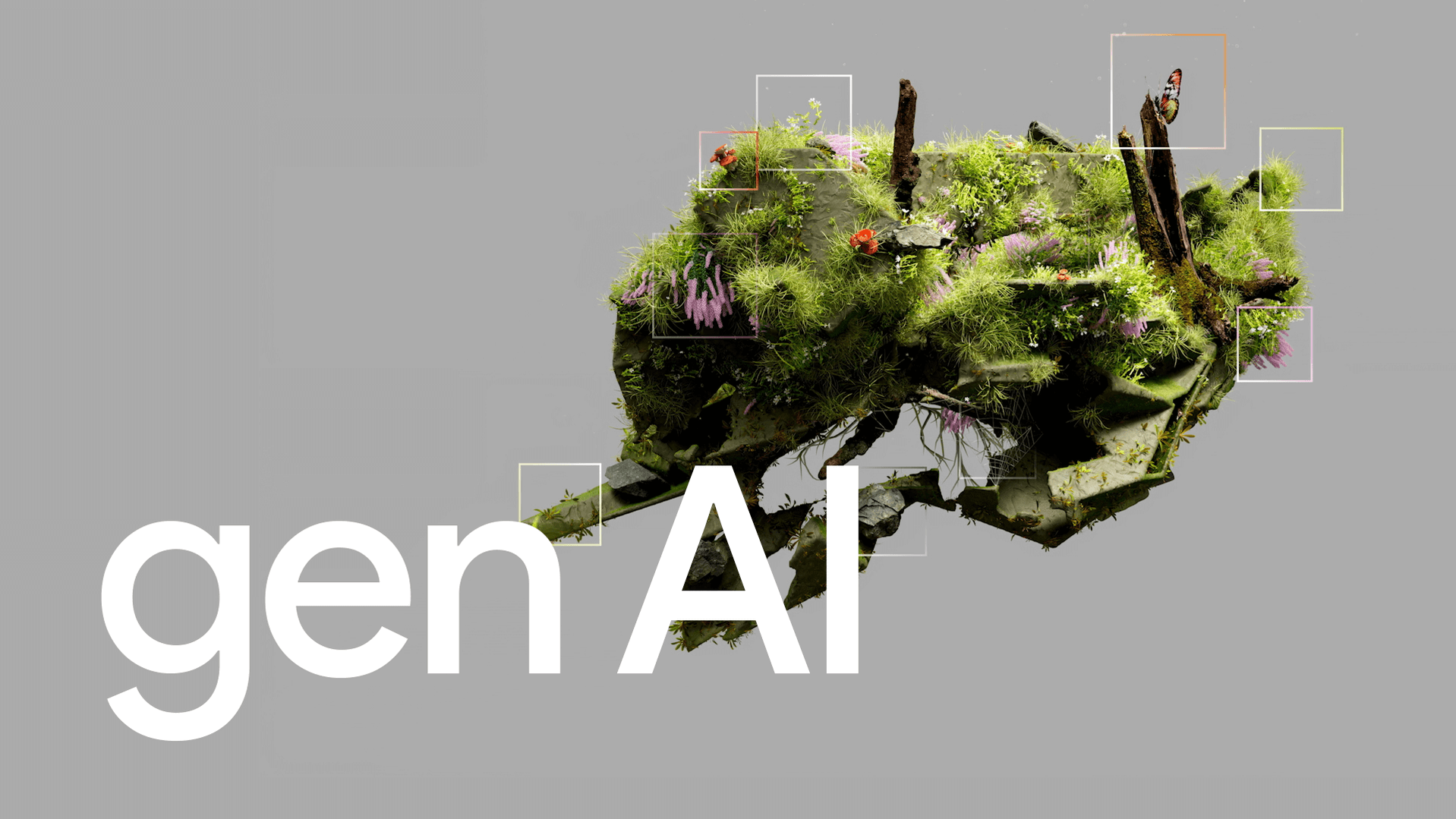The buzz around generative AI this past year has made is making the potential of what’s possible with AI understandable to just about anyone, with some reports estimating that generative AI could increase the overall impact of other types of AI technologies by as much as 40%.
As organizations continue to build their data and AI maturity in the cloud, investing in new generative AI capabilities and use cases represents an irresistible opportunity to strengthen AI strategies across a wide range of transformation initiatives.
The question is, will the return on these investments be as significant as expected?
Whenever a novel technology bursts onto the scene, the promises to accelerate, transform, and gain competitive advantage can reach mythical proportions. Still, a decade into digital transformation investments, the realized benefits have often been less magical in reality — McKinsey research from 2022 found that organizations are capturing just a third of the impact they anticipated from their recent digital investments.
With a shifting macroeconomic environment creating new levels of uncertainty, the stakes have never been higher to get both technology investment and adoption right the first time around. Success when adopting any technology — AI or other — largely depends on your ability to align adoption decisions with business strategy, according to a new global survey from Economist Impact and Google Cloud.
The Duet AI Digest
To maximize the value of AI technology investments, it's critical to align adoption decisions with business strategy and support specific business goals.
Include the right decision-makers and worker feedback and utilize multi-pronged assessments to understand the full costs and benefits of your AI technology investments.
"Ultimately, any newly adopted technology will only be as good as its implementation. Many organizations are missing opportunities by failing to address employee concerns and prioritize training."
This summary was created using Duet AI for Google Workspace.
Based on interviews with hundreds of business leaders across four continents and all major industry sectors, the report highlights the most common issues that impede successful adoption and offers five strategic recommendations to help maximize the value of your AI technology investments.
1. Investments are often evaluated based on a limited picture of ROI
To understand an investment’s ROI, it’s critical to evaluate a technology’s performance. Still, according to Economist Impact, technology performance assessments rarely offer a holistic perspective of a technology’s performance. Some 87% of organizations globally reported they conduct formal reviews of technologies, but often rely on tools that fail to capture softer technology benefits.
For example, Cost Benefit Analysis was the most common tool used across all regions to evaluate technologies. However, some opportunities, such as reallocating resources towards innovation efforts due to AI automation, may not be easily expressed as monetary values. Without incorporating tools that provide both quantitative and qualitative data, you may draw inaccurate conclusions from your data about a technology’s impact or overlook culture-driven barriers to implementation and adoption.
Recommendation: Use multi-pronged assessments (e.g., Cost Benefit Analysis, telemetry, and user surveys) to help you understand the full costs and benefits of your AI technology investments. In other words, implementation data is still essential, but you’ll also need to collect user feedback to understand how technology performs within different organizational contexts.

2. Technology purchases don’t match up with business strategy
To maximize the value of technology investments, it’s critical for technology purchases to align with both your technology and business strategies. However, Economist Impact’s research found evidence that many technology purchases don’t support a specific business goal, suggesting a disconnect between adoption decisions and overall strategy. The large majority (85%) of business leaders shared they make new technology purchases to meet increasing customer demands, yet 67% are struggling to do so.
Technology strategies only generate value when they help achieve larger business goals. If you make a decision to purchase an AI technology solution without first considering how it can improve business processes or support the use of existing technologies, you may end up limiting its impact and wasting resources.
Recommendation: Perform a gap analysis or needs assessment of your existing technology stack against your business objectives to ensure your new AI technology investments will actually help you meet your agreed-upon goals and advance your business strategy. Ideally, you should include both technical and non-technical leaders across functions to ensure the analysis includes all the existing needs and gaps in your organization.
3. Technology decisions aren’t always made by the right person
Decision-making processes tend to lack critical input from those who will actually use the new technology every day, increasing the risk of failure. The survey highlighted that the technology adoption process is mostly guided by the C-suite, noting that CTOs (33%), CEOs (29%), and CIOs (26%) are the primary stakeholders who typically propose the need for new technologies.
The result is a top-down ad-hoc approach for suggesting and selecting new technologies, which doesn’t consider crucial aspects of implementation, such as the costs of upskilling employees, or perspectives about how a technology will function in daily activities. If you don’t have any idea what employees or customers need, it’s difficult to ensure you’re choosing the best solution to solve your current business challenges.

Engaging both strategy-makers and impacted employees in the decision-making process can make sure that you’re investing in new AI solutions that help meet strategic objectives while increasing buy-in and adoption rates after implementation.
Recommendation: Create a formal decision-making process, which includes standardized practices for sharing opinions and feedback. The most effective technology processes include both technical and managerial roles, as well as customer-focused or strategy-oriented employees, in the scoping, selection, and roll-out of new AI technology purchases.
4. Technology implementations rarely require training or feedback
Ultimately, any newly adopted technology will only be as good as its implementation. According to Economist Impact, many organizations are missing opportunities by failing to address employee concerns and prioritize training. The survey identified a lack of employee knowledge on how to use technology (31%) as one of the top challenging factors to technology implementation, and 36% of CxOs felt that employee resistance to new technologies was their most significant obstacle to success.
Interestingly, the results also found that despite the proven value of integrating internal feedback processes or employee training programs, the large majority of organizations globally still don’t require them. Around two-thirds of respondents said training and employee support is not required in their technology implementations and less than a fourth actively integrate feedback processes.
Recommendation: Communicate the benefits of AI adoption clearly and provide targeted training and opportunities to share feedback for both employees and supervisors. Transparency is particularly crucial when you adopt AI, which is more prone to employee resistance due to fears over potential job loss.
The views expressed in this article are those of the authors. They are an independent analysis of the survey data produced by Economist Impact and do not reflect the views of Economist Impact.
36% of CxOs felt that employee resistance to new technologies was their most significant obstacle to success. Communicate the benefits of AI adoption clearly and provide targeted training and opportunities to share feedback
5. Project and change management aren’t grounded in best practices
In general, the more complex and interrelated the technology implementation project, the higher the probability it will fail to achieve its core objectives or deliver its expected benefits. However, the Economist Impact research noted that many companies, regardless of the region, industry, or size, often fail to apply best practices for project management when implementing new technologies.
More than half of the respondents said that although middle management is most commonly involved in project implementations, there were no dominant standards for implementation methods or feedback tools. Organizations mentioned using agile approaches (25%), the milestone-based Stage Gate methodology (22%), and another 12% cited the use of third-party testing — none of which were mutually exclusive.
Failing to standardize implementation requirements using best practices can also impact other critical factors that contribute to success, such as employee satisfaction, which the survey found to be the most important indicator of business resilience. In other words, gaining competency in a proven project management framework is now a necessity for realizing the full value of a new technology.
Recommendation: Given the urgency around AI adoption, you should take advantage of best practices to improve your odds of success. While agile frameworks may not always be suitable for every implementation, the overall concept of breaking up larger projects into incremental stages will help accelerate implementation, combat complexity, and reduce the risk of failure.
Looking Forward
In an increasingly AI-driven world, the technology investments you make now are some of, if not, the most important choices you’ll need to make to ensure your organization is ready for a new way of working. Part of those technology decisions will be understanding how they align across your overall strategy, implementing them effectively, and conducting accurate assessments to understand whether your investments are moving you forward or holding you back from reaching your full potential.










